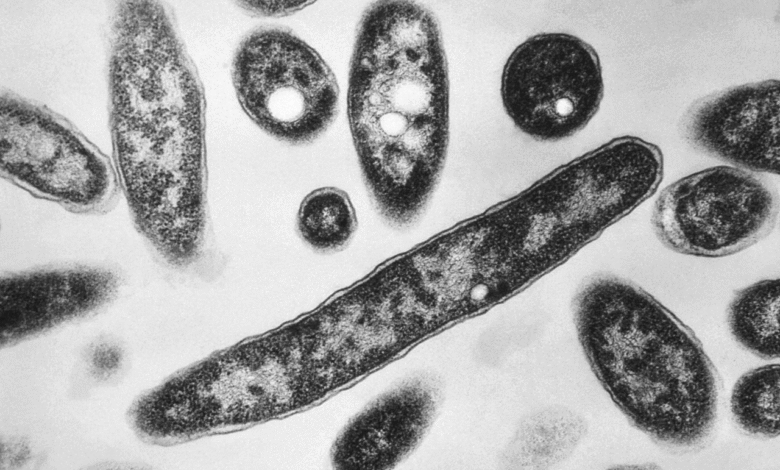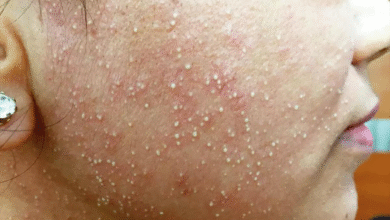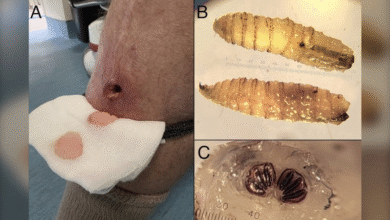Legionnaires’ Disease Outbreak: What You Need to Know

The recent Legionnaires’ disease outbreak in New York City has raised significant alarms as health officials report that five individuals have tragically lost their lives due to this bacterial pneumonia. With over 108 confirmed cases, particularly concentrated in Central Harlem’s zip codes, the warnings have become increasingly urgent. The Legionella bacteria, responsible for this serious condition, can cause debilitating pneumonia symptoms, affecting vulnerable populations like the elderly and those with chronic health issues. The Centers for Disease Control and Prevention (CDC) has emphasized the necessity for residents, particularly in outbreak zones, to stay vigilant and seek medical care at the first signs of illness. As the city moves towards remediation efforts, including the disinfection of impacted cooling towers, understanding the risks associated with water systems housing Legionella becomes crucial for public health safety.
The current health crisis marked by the Legionnaires’ disease outbreak underscores the urgent need for public awareness regarding this type of pneumonia. Often linked to inhaling contaminated water droplets, the bacteria responsible for this illness pose a serious risk, particularly to high-risk groups like smokers and older adults. With pneumonia effects becoming evident, the health authorities in New York City are urging residents to recognize the early pneumonia symptoms and act accordingly. As the hometown grapples with this outbreak, it’s essential to heed the CDC recommendations for prevention and treatment. The focus on maintaining safe water systems is a critical discussion point, as understanding the nuances of bacterial respiratory illnesses like Legionnaires’ disease can help mitigate its spread.
Understanding Legionnaires’ Disease Outbreaks
Legionnaires’ disease outbreaks can pose serious health risks to communities, as evidenced by the recent surge in New York City, where 108 confirmed cases have been reported. This bacterial pneumonia, caused by Legionella bacteria, primarily affects individuals with weakened immune systems, older adults, and those with chronic lung conditions. In such an outbreak, it is essential to identify the source of infection, which is usually linked to water systems that encourage bacterial growth, such as cooling towers and plumbing systems. Health officials are closely monitoring such environments to prevent further spread.
According to the Centers for Disease Control and Prevention (CDC), Legionnaires’ disease is not transmitted from person to person; hence, the focus should be on environmental factors that contribute to outbreaks. Symptoms typically emerge within 2 to 14 days after exposure and can manifest as flu-like symptoms, including cough, chills, and muscle aches. Due to its potentially serious nature, anyone in affected areas, such as Central Harlem, experiencing these symptoms should seek medical attention quickly to ensure early diagnosis and treatment.
Prevention Strategies for Legionella Bacteria
Preventing Legionnaires’ disease requires proactive measures to control the growth of Legionella bacteria in water systems. The CDC recommends that building owners implement comprehensive water management programs that focus on temperature control, regular maintenance of water systems, and routine testing for Legionella. These steps are vital in reducing risks, particularly in high-risk environments such as hospitals, hotels, and senior living facilities. Without these precautions, the likelihood of bacterial colonization remains high, particularly in stagnant or poorly maintained water systems.
In addition, individuals at higher risk—such as smokers, seniors, and those with chronic lung diseases—should take further precautions. The CDC emphasizes the importance of being alert to the symptoms of pneumonia and seeking immediate medical care if they suspect exposure. As there are no vaccines for Legionnaires’ disease, public awareness campaigns about hygiene and safe water practices play a crucial role in community health, ultimately reducing the impact of outbreaks.
Recognizing Pneumonia Symptoms
Recognizing pneumonia symptoms early is crucial in mitigating the effects of diseases like Legionnaires’ disease. Common symptoms include cough, fever, chills, and muscle aches, which are often mistaken for flu or cold symptoms. The overlapping nature of these symptoms means that timely medical intervention is essential, especially in outbreak scenarios where early cases may escalate into a public health emergency. Delayed diagnosis can lead to severe complications such as lung failure, underscoring the need for vigilance in areas with confirmed outbreaks.
Healthcare professionals encourage individuals, especially those at high risk, to be proactive about their health. If you live in or visit areas under investigation for outbreaks, be aware of how to differentiate between typical cold symptoms and those indicative of pneumonia. Additionally, maintaining a dialogue with healthcare providers about symptoms and risk factors can empower patients to seek treatment sooner, which can be lifesaving.
The Role of Healthcare Providers in Outbreak Response
Healthcare providers play a critical role in managing Legionnaires’ disease outbreaks by both diagnosing and treating affected individuals, along with educating the community about risks. During an outbreak, it’s essential for providers to stay informed about local health alerts issued by authorities like the NYC Health Department. As cases may arise unexpectedly, healthcare professionals should emphasize the importance of prompt diagnosis and treatment, particularly in patients presenting with pneumonia-like symptoms.
Additionally, providers should be prepared to recognize and report potential outbreaks to health authorities. This collaboration assists in the implementation of effective public health responses, including sanitation measures and environmental assessments of water systems believed to harbor Legionella bacteria. Strong partnerships between healthcare providers, public health officials, and the community are vital to impeding the progression of Legionnaires’ disease and protecting public health.
Guidelines for Reducing Legionella Exposure
Reducing exposure to Legionella bacteria is essential to preventing Legionnaires’ disease. The CDC emphasizes the importance of proper water management within buildings, which includes regular testing and maintenance of water systems, especially cooling towers and plumbing infrastructures. By ensuring that water systems are monitored for Legionella, building owners can significantly reduce the risk of exposure for occupants. The implementation of strategies such as maintaining water temperatures that discourage bacterial growth is also recommended.
In addition to these guidelines, public education about safety practices to minimize exposure is critical. Individuals should be informed about the potential risks associated with hot tubs, showers, and cooling systems, particularly in communal facilities. Awareness campaigns can empower community members to take action, such as reporting suspected cases or unsafe water conditions, ultimately enhancing collective health efforts to combat the spread of Legionnaires’ disease.
Long-Term Consequences of Legionnaires’ Disease
Legionnaires’ disease can lead to long-term health complications, particularly for those who survive severe cases. Patients may experience lasting respiratory issues, decreased lung function, and a diminished quality of life. The mortality rate for Legionnaires’ can be significant, with an estimated 10% of cases resulting in death, particularly among high-risk populations. Those who recover often require extensive follow-up care, emphasizing the importance of early detection and supportive treatment.
Furthermore, outbreaks can strain healthcare resources, disrupt community safety, and lead to increased surveillance and remedial actions in public health infrastructure. This makes it imperative for health departments and stakeholders to act swiftly in outbreak situations. Ongoing research into treatment options and public health strategies plays a significant role in managing both immediate and long-term consequences of Legionnaires’ disease, ensuring that affected communities receive adequate support.
Current Treatments for Legionnaires’ Disease
The treatment of Legionnaires’ disease typically involves a course of antibiotics, with Levofloxacin and Azithromycin being the most common options. Early intervention significantly impacts the outcomes, as patients treated promptly are more likely to experience a complete recovery. Given the serious nature of the condition, healthcare providers are advised to act aggressively, particularly when dealing with patients who have existing health vulnerabilities or show rapid deterioration.
Treatment regimens may also include intravenous antibiotics for severe cases, as oral medications might not be effective enough in the acute stages of the disease. Close monitoring of patient progress is critical, with adjustments made to treatment plans as needed to address any complications that arise. This proactive approach helps ensure better recovery rates and minimizes the long-term health implications associated with this potentially fatal bacterial pneumonia.
Impact of Public Health Policies on Legionnaires’ Outbreaks
Public health policies play a vital role in controlling Legionnaires’ disease outbreaks. Effective regulations regarding the maintenance and monitoring of water systems are crucial to preventing bacterial proliferation. Health departments must regularly enforce guidelines and ensure compliance among building owners and managers, particularly in densely populated urban areas like New York City. These policies aim to reduce the risk of Legionella spreading through communal water sources.
In addition, community outreach and education initiatives about the dangers of Legionnaires’ disease and the importance of prompt medical attention can empower residents to be proactive about their health. By integrating public health strategies with community awareness, officials can foster a more informed public, reducing the incidence of outbreaks. Legislative backing for research and enhanced building management protocols will also contribute to long-term solutions in protecting public health.
Research Advances in Legionnaires’ Disease
Research on Legionnaires’ disease has advanced significantly in recent years, focusing on understanding the bacterial pathogenesis and developing better diagnostic methods. Scientists are currently exploring genetic factors that may contribute to an individual’s susceptibility and responses to treatment. These insights can lead to more effective strategies for prevention and quicker therapeutic interventions, particularly in high-risk populations that are disproportionately affected during outbreaks.
Additionally, advancements in epidemiological studies are improving the way health officials track and respond to Legionnaires’ disease outbreaks. Early detection systems, coupled with comprehensive data analytics, can help public health authorities to implement targeted interventions more rapidly. Such research efforts are vital in ensuring that both current and future outbreaks are managed efficiently, ultimately safeguarding public health against this severe form of pneumonia.
Frequently Asked Questions
What are the symptoms of Legionnaires’ disease during an outbreak?
Symptoms of Legionnaires’ disease typically manifest between two and 14 days after exposure to the Legionella bacteria. They include flu-like symptoms such as cough, chills, muscle aches, fever, difficulty breathing, nausea, diarrhea, and confusion. If you experience these symptoms during the outbreak, especially if in the affected areas of New York City, seek medical attention promptly.
How is Legionnaires’ disease transmitted during an outbreak?
Legionnaires’ disease outbreaks are caused by exposure to water droplets contaminated with Legionella bacteria. This can happen through inhaling or swallowing water from sources like showerheads, sink faucets, hot tubs, or cooling towers. It is not typically spread from person to person, according to CDC recommendations.
What precautions should be taken during the New York City Legionnaires’ disease outbreak?
During the ongoing Legionnaires’ disease outbreak in New York City, residents in affected areas (Central Harlem zip codes) should monitor for flu-like symptoms and contact healthcare providers immediately if they experience any. Building owners should implement water management programs to reduce Legionella bacteria growth, following CDC recommendations.
What populations are at higher risk for Legionnaires’ disease during an outbreak?
Individuals at higher risk for developing severe illness from Legionnaires’ disease during an outbreak include adults aged 50 and older, smokers, those with chronic lung conditions, and immunocompromised individuals. It’s essential for these groups to be particularly vigilant about their health and seek treatment at the first signs of pneumonia symptoms.
How is Legionnaires’ disease diagnosed and treated during an outbreak?
Diagnosis of Legionnaires’ disease typically involves chest X-rays, urine tests, and laboratory analysis of sputum samples. If confirmed, it is treated with antibiotics, such as Levofloxacin or Azithromycin. Immediate and aggressive treatment is crucial to prevent complications, and hospitalization may be necessary for severe cases.
| Key Point | Details |
|---|---|
| Outbreak Overview | Five deaths and 108 confirmed cases in New York City as of August 19. |
| Affected Area | Cluster in Central Harlem (zip codes 10027, 10030, 10035, 10037, 10039), with 58 diagnosed cases. |
| Transmission | Infection occurs through inhaling or swallowing droplets contaminated with Legionella; not person-to-person. |
| Symptoms | Common symptoms include cough, fever, chills, and difficulty breathing. |
| At-Risk Groups | Includes adults aged 50+, smokers, those with chronic lung conditions. |
| Treatment | Effective if diagnosed early; antibiotics such as Levofloxacin and Azithromycin. |
| Prevention | No vaccines available; focus on reducing Legionella growth, especially in water systems. |
Summary
The Legionnaires’ disease outbreak in New York City has raised significant public health concerns, as evidenced by the confirmed cases and fatalities reported. Prompt detection and treatment are crucial, especially for at-risk populations. Heightening awareness about the causes, symptoms, and prevention methods of Legionnaires’ disease outbreak can lead to better health outcomes and encourage individuals to seek treatment when necessary.




